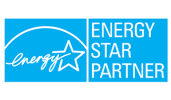With competition in a crowded solar installer field – especially in the residential PV sector – installers and solar service providers may see energy efficiency services as a promising means of differentiation and an opportunity for cross-selling.
Energy efficiency retrofits are an increasingly big business in the U.S., especially among heavy consumers of energy.
According to a recent report from Bloomberg New Energy Finance and the Business Council for Sustainable Energy, U.S. utility budgets for efficiency expenditures rose to $7 billion in 2011, and gains in efficiency helped overall U.S. power demand fall by 6.4% from 2007 to 2012.
With competition in a crowded solar installer field – especially in the residential PV sector – installers and solar service providers may see energy efficiency services as a promising means of differentiation and an opportunity for cross-selling.
Efficiency would seem to be a natural complement to these companies’ existing green-focused services. Many solar incentive programs, in fact, require certain home energy efficiency measures to be completed before an eligible PV array can be installed.
But is making the leap into the energy efficiency business as easy and lucrative as it seems?
One well-known national solar provider, SolarCity, launched its line of energy efficiency products and services in mid-2010. As the company noted in financial documents released in preparation for its initial public offering earlier this year, SolarCity uses proprietary software to analyze its residential customers’ energy usage in order to “identify opportunities for energy efficiency improvements.” A similar offering for commercial customers is expected to follow.
SolarCity added that it plans to continue investing in its energy efficiency business going forward. So far, revenue from the efficiency business “has not been material” compared to its solar installation revenues, the company noted in its financial documents.
It remains to be seen whether SolarCity’s energy efficiency segment will take off or ultimately prove to be a financial drag. Other solar installers, meanwhile, offer varying views on the promise of energy efficiency as a revenue stream – and the degree of difficulty involved with getting into this market.
Bob Kingery, co-founder and president of Southern Energy Management (SEM), warns that energy efficiency services comprise a multitude of options and do not lend themselves to a quick sale.
“On paper, it looks simple, but every home is different, and they all have different needs,” he says. SEM, which opened its energy efficiency services division 11 years ago, has found the ability to cross-sell solar and energy efficiency to be strong, but actual installation experiences may be a different story.
In comparison to a PV array, energy efficiency upgrades tend to be significantly more involved – and more intrusive to the customer’s life.
“They are infinitely more complex and also have less of a financial reward than [a PV installation] for the installer,” Kingery notes. Many types of upgrades may also be more difficult to perform well than the average solar installation.











